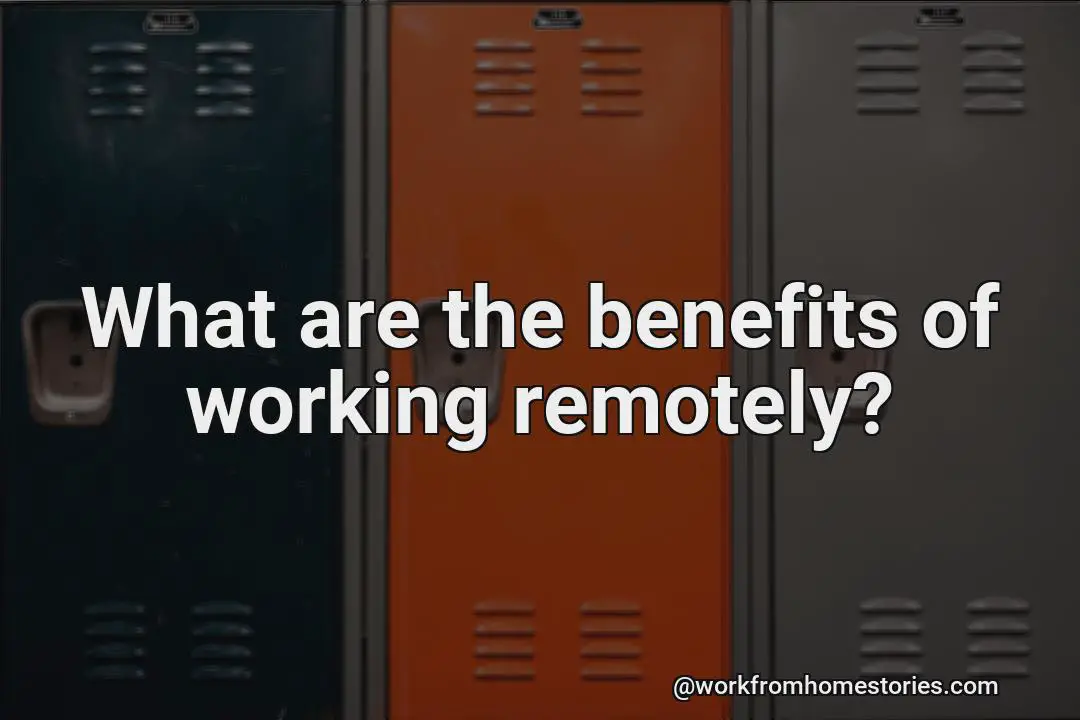What are the benefits of working remotely?

What does it take to succeed in working remotely?
To work from home efficiently you will need to plan and structure your days so the hours don’t take away from you. Create to-do lists set goals and come up with a daily schedule complete with breaks and hours when you can concentrate on deeper work. The second thing you’ll need to do is to ensure that you have a good work environment. You can make your home office look like the Googleplex, but if you spend all of your time in the dark, your productivity will suffer. Take a look around your office. If you don’t have a good chair or an ergonomic keyboard, it’s time to invest in those. If you don’t have a comfortable place to work, you won’t be able to focus.
The third thing you’ll need to do is to learn how to focus on deep work. There are many things that can interfere with deep work
Why do people like to work remotely?
Teleworkers say they prefer to stay home for better work-life balance productivity or because they moved from the office. Fewer people say covid is the main reason they work from home 42 now versus 57 in 2020. According to recent survey data roughly one-third of parents cite childcare as a major reason they telework. The report finds that telework is especially popular among Millennials, Gen Xers and Baby Boomers. More than half of those ages 18 to 34 say they work remotely at least some of the time, compared with 36% of those 35 to 54 and 26% of those 55 and older.
The survey of 3,000 teleworkers was conducted in May by Harris Insight & Analytics and sponsored by OfficeMax, which has a history of telework.
Here are the report’s key findings:
Nearly half (48%) of teleworkers say they work remotely because they have relocated or can’t
Is remote work flexible?
You can have the core hours you can have compressed hours you can work from home and work away but it’s still not flexible working the definition of flexible working is for people to be able to work anywhere and everywhere and they’re in control not the employer While flexible working has been around for a while, the number of employees who actually have the option to work remotely is still relatively low.
According to Flexicurve, only 7.5 percent of the workforce has the option to work remotely.
It’s something that would allow them to work from home, or to work from another location such as a cafe or library.
“I think part of the reason why it’s not happening more is because there is a real culture change,” Mr Vaz said.
What are the downsides of remote working?
Workers report more stress and anxiety. Another udemy study shows that 89 us employees fear covid-19 and their fears have compromised their job performance. The survey found that worries spiked with the increases of new covid-19 cases. The fear has spread throughout the country. A recent survey found that nearly two-thirds of Americans are concerned that the coronavirus will spread to their community. The virus has spread to all 50 states and more than 100 countries.
This has led to massive layoffs, furloughs and businesses going under. The unemployment rate has already reached 14.7% and many people are being furloughed or laid off at this time.
The U.S. economy may take a long time to recover from the coronavirus pandemic. The government is trying to help the economy by providing low-interest loans to businesses that need
What is a remote working visa?
A digital nomad is a person who lives a nomadic lifestyle and uses technology to work from outside their home country remotely. Digital nomad visas allow these individuals to work legally in another country. These visas are available for students and work however the costs and requirements tend to vary. How to Apply for a Digital Nomad Visa
Digital nomad visas are available to individuals who are interested in working remotely from outside their home country. The requirements and costs for these visas vary depending on the country. To get started, you’ll need to do some research on the country you want to live in and the country you want to work in.
Once you have your choice of countries, you’ll need to do some research on the country you want to live in and the country you want to work in. You’ll also need to find a job that’s available in the country you
